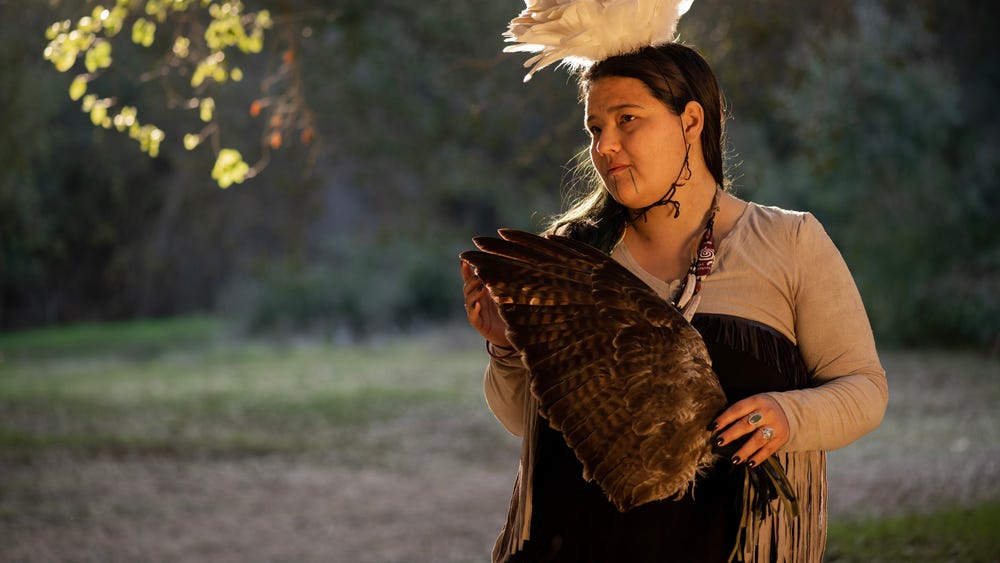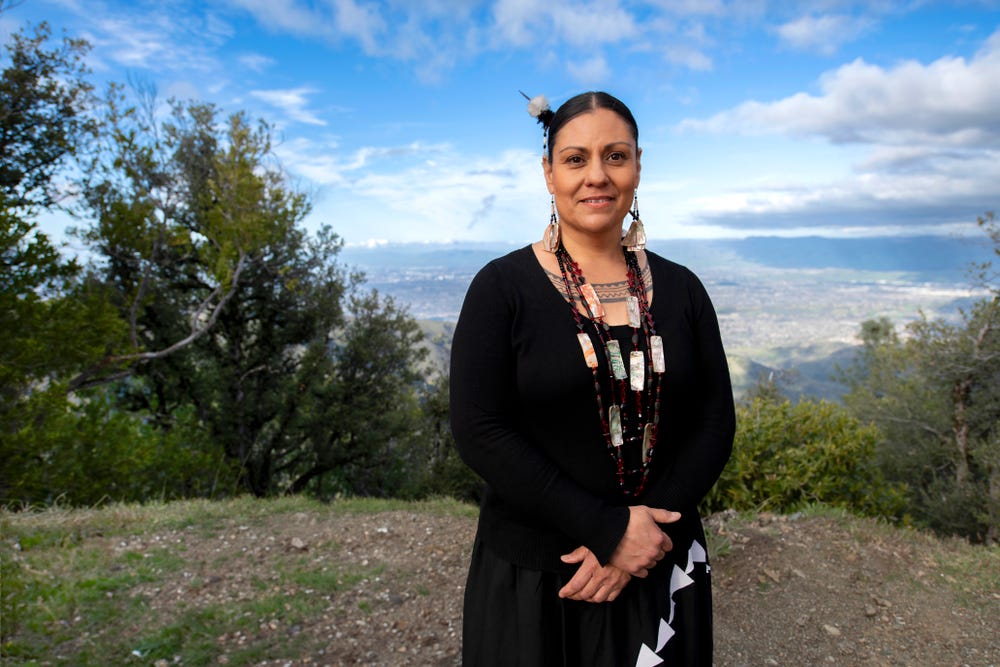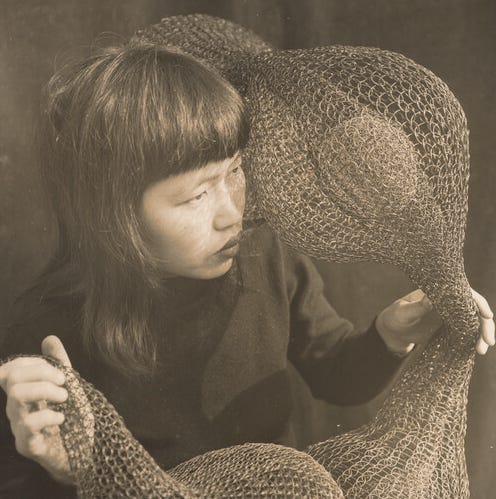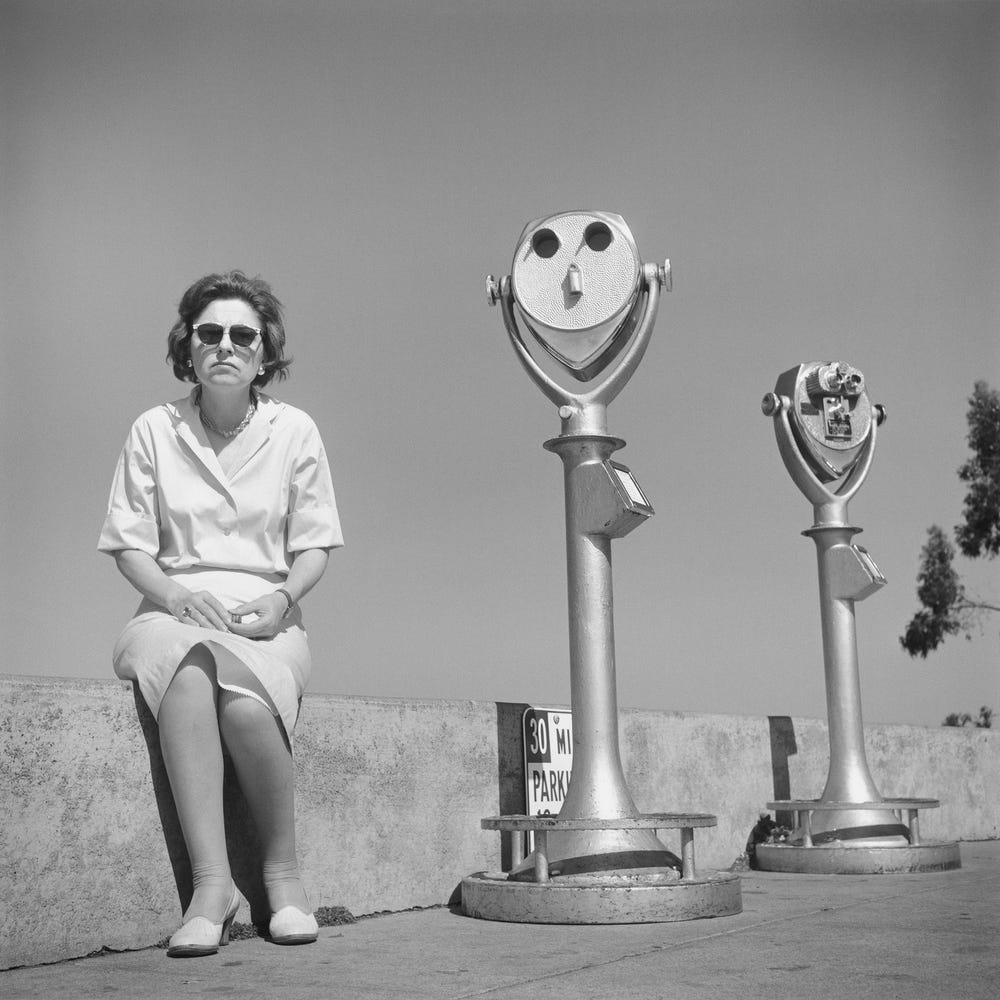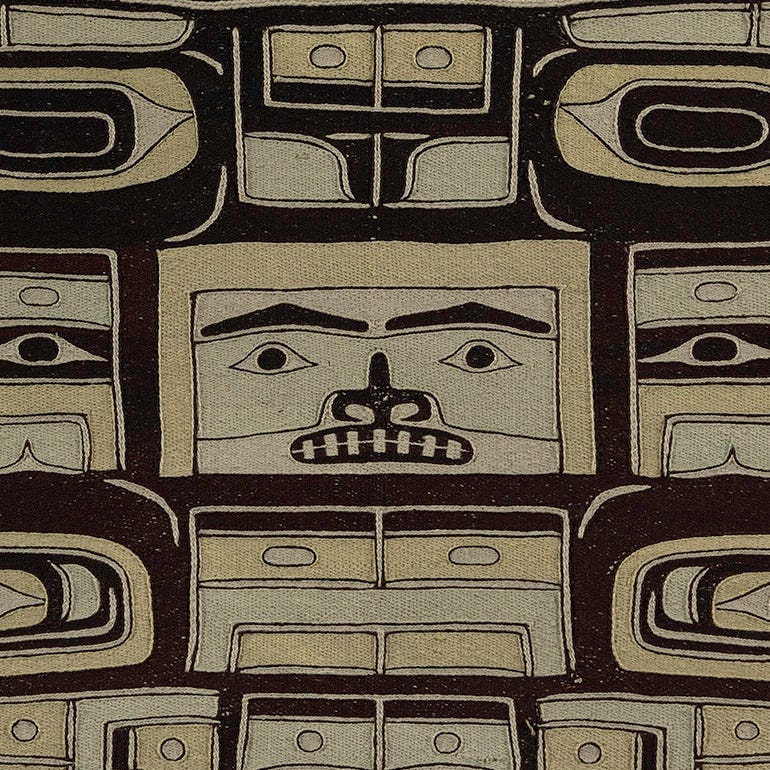Q+A: Contemporary Indigenous Voices Photographer Kirti Bassendine
By Magnolia Molcan, senior web managing editor, in conversation with photographer Kirti Bassendine
September 7, 2023
Kanyon Sayers-Roods, chairwoman, Indian Canyon Mutsun Band of Costanoan Ohlone People (Indian Canyon Nation), Contemporary Indigenous Voices of California’s South Coast Range
We sat down with photographer Kirti Bassendine to talk about her exhibition Contemporary Indigenous Voices of California’s South Coast Range. Here, she shares how the project developed, how she explores identity and culture in her work, and why it’s important to let people tell their own stories.
Magnolia Molcan: How did you become an artist?
Kirti Bassendine: My cultural roots, as well as my creative expression, begin back in Kenya, observing my mom, working with her, assisting her. She was an amazing seamstress, and she also created beautiful and intricate sarees, where she embroidered flowers and patterns with golds and silks and colors. I think a lot of that creativity was already instilled in me. I got her creative passion.
MM: What interests you about exploring identity, human relationships, and cultural belonging in your work?
KB: As an Indian child growing up in Kenya, I experienced a lot of racial discrimination close up at a very young age. There was a lot of segregation. We were actually discouraged from mingling and socializing with African children.
Then moving to England, I suddenly became a child of displacement. The culture was so different. It was so alienating. Trying to find my feet within that culture I was suddenly put in. Growing up in an Indian culture, it’s very different to going to school in a Western culture.
I became aware of the different marginalized communities, the feeling of displacement, identity, a sense of belonging, within a different culture that you’re living in.
Voiceless
MM: What interests you about the role women play in passing on culture to the next generation?
KB: As a woman, as a mother, as a grandmother, as an aunt, as an adopted godparent, whatever role you have as a woman, I think it is so important to instill that. We as women play a huge role in how our children grow up through socialization.
It’s important to pass that culture of basic food, basic ingredients that you use in your culture, the spices or the herbs, and basic etiquette of the culture, the arts, and the language. There’s an urgent need for us to embrace culture and be proud of it, whichever culture we’re in.
Hristina and her daughters: Dainza and Donna, Just Like You
MM: How did Contemporary Indigenous Voices of California’s South Coast Range come about?
KB: For the last four years, I’ve really been connecting with different cultural groups, cultural bearers, building relationships, really just listening to what the culture is about, listening to what their cultural expression is.
That’s where Contemporary Indigenous Voices of California’s South Coast Range began. Their connection to land is so pivotal because it envelops everything the communities are about. It’s really the culture. Everything is connected to land.
MM: What do we mean when we say the South Coast Range?
KB: The South Coast Range begins on the San Francisco Peninsula and San Francisco Bay, and runs south into San Luis Obispo and Morro Bay.
MM: How did the project develop?
KB: Luckily I managed to get funding through the California Humanities, which helped me begin the project. I got the funding in 2021, but before that I was interviewing, researching, and doing all the other legwork, even sample photography.
I started talking to my humanities expert and, with her help, found 25 cultural groups that were located in California’s South Coast Range. With my cultural advisor we drafted an invitation letter to participate in this project. I received 11 excited responses. I did an in-depth interview session with them where they shared their history and unique story, and they each selected two participants from their cultural group.
This exhibition would not be possible without the commitment and support of the Indigenous participants, the humanities expert, the cultural adviser, my team, and volunteers.
Quirina Luna Geary, chairwoman, Tamien Nation, Contemporary Indigenous Voices of California’s South Coast Range
MM: This exhibition explores cultural connections to the land, and issues of climate change. Why do you think now is the right time to have this exhibition, and these conversations?
KB: It’s so timely. From the participants, the leadership also, there’s a big push and a movement right now. Rematriation, Land Back, is a big conversation. The need to be heard, saying, “We are here, we have always been here.” That is the fundamental message.
Facing climate change, bringing the Indigenous perspective back, bringing their traditional ecological knowledge is so crucial right now to give them the respect to tend the land. With the wildfires we’ve had, the flooding we’ve had, we need that knowledge, we need as a collective to work together.
We have a responsibility for the future generations to work together. This is well past due.
MM: In several of your projects, including Contemporary Indigenous Voices and Homeless Voices, you included “voices” in the title. Why do you think it’s important to let your subjects tell their own stories?
Growing up in a very biased, almost segregated culture, I wanted to lift my voice. It started with Voiceless that I created from my own experience and that of other South Asian girls and boys, growing up in the Western world, and actually speaking out and expressing what it was like to navigate the two cultures.
Monica Arellano, tribal vice chairwoman, Muwekma Ohlone Tribe, Contemporary Indigenous Voices of California’s South Coast Range
I realized the power of voice. It’s so important to tell your own story, to express it and to be heard. In my artistic practice I am trying to have all these different cultures, different marginalized communities, invisible voices, come forward to be heard, to be amplified.
MM: What do you hope viewers take away from your work?
Whether Contemporary Indigenous Voices or one of my other projects, I really hope they understand the importance of connecting with Indigenous culture, cultural roots, passing on culture to the next generation, ecological relationships, and global climate crises. I hope that the project leads them to question more: questioning their connections to their ancestral roots, their self-identity within that culture, as well as their identity within the wider culture, the modern world we live in.
This conversation has been edited for length and clarity. All photographs are by Kirti Bassendine.
